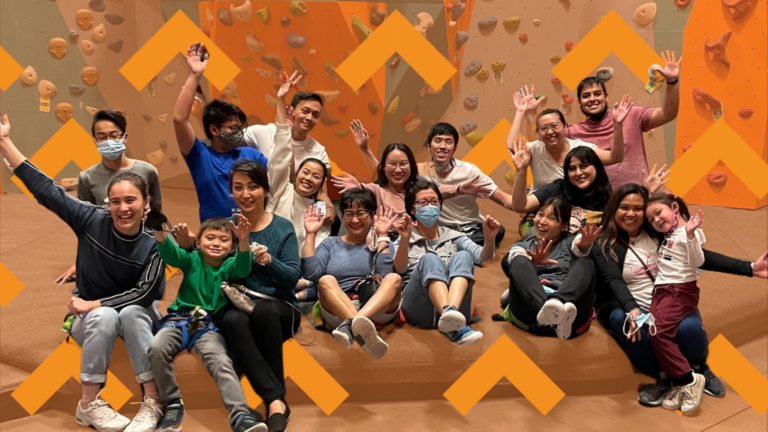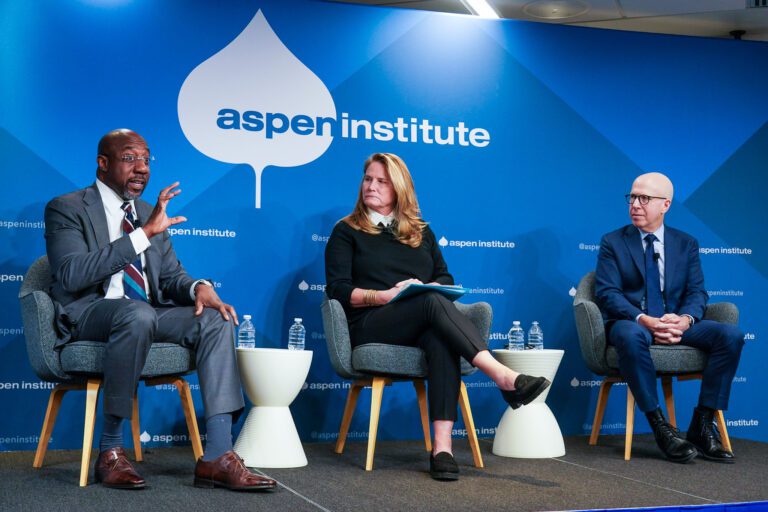“Living Proof” of Two-Gen Success
There’s a fine line between a “hand out” and a “hand up.” That demarcation is a key point of debate in economic advancement efforts. It’s hard to argue against providing education, safe child care, or workforce support to the disadvantaged. But how and how much? And in whom do we invest to break the cycle of poverty?
We know what’s possible when we invest in a parent and a child simultaneously: living proof, and there are lessons to glean from my experience to help design other effective two-generation models that help move families toward economic security.
A wake-up call
My mother had me at 19, and our family grew to six children. I alone would graduate high school on time. One other sibling earned a high school diploma.
By age 20 I had already walked a windy road to college due to my family’s unstable housing and finances. And then I became pregnant. It was a wake-up call. Determined to stay on the path, I took out loans and continued college. I gave birth in July 1998 and was back in class by August.
Two years later, I applied for and was awarded the Gates Millennium Scholarship (GMS), a full ride academic scholarship from the Bill and Melinda Gates Foundation designed to invest in low-income high-potential youth. The program, administered by the United Negro College Fund (UNCF), covered my education and living expenses so I could complete my bachelor’s degree and pursue graduate school.
My son benefited from that investment. The scholarship paid for his early education, and I was able to place him in a high-quality preschool program where he thrived. By 2003, when I graduated with a masters degree, he was prepared for kindergarten. Today he is a rising junior and an honors student. I am now a single mother of two sons and self-sufficient.
Breaking the cycle
The investment in me and my son created a foundation that made the difference between being a statistic and becoming a thriving member of my community.
My life defies the stories about single mothers and women of color in this country. In 2012, more than 30 percent of female-headed households with no husband present were living below the poverty line. (Compare that with 6.3 percent of married couples and 16.4 percent of males with no wife present.) By varying measures, I’m in the top 10 percent of female earners in the United States. I own a home. I have health care and a steadily advancing career. But more importantly, I give back, so the investment pays dividends as I mentor and support others like me.
Lessons on two-gen
What can we learn about designing a successful two-generation program from my experience as a Gates Scholar:
- Flexible, tailored program: I had the flexibility to invest my support where needed. I asked, they listened and through established processes, I was able to ensure my scholarship provided for my unique situation – the mother of a 2-year-old who needed early education while living off campus and attending school full time.
- Clear – and high – expectations: The Gates Scholarship required a 3.3 GPA as one of the eligibility factors when I applied as the first class in 2000. That GPA requirement was higher than any other scholarship I applied to at the time. I appreciated that they expected much from us. Those expectations reminded me what I was capable of even as I struggled with my insecurities as a young parent whose family had no tacit knowledge about pursuing higher education.
- Today, Gates Scholars have a higher graduation rate (87 percent) than the average college student in America (59 percent). We students and alums also embrace the program tenets of Rigor, Relevance, Relationships and Responsibility. As one of my fellow alumni said to new scholars on receiving the scholarship, “Now is not the time to rest on your laurels.” We encouraged each other to work even harder and fully achieve our potential.
- Ongoing support and mentorship: All new Gates Scholars attend a leadership conference during their first year as a scholar. It is a powerful weekend to meet the other class of scholars and alumni, and prepare for college life and making the most of the scholarship opportunity. Scholars have access to tutoring support, mentors, and advisors.
Paying it forward
A few years ago, I had just finished a workshop on time management for freshman at a GMS leadership conference in Virginia, when a young woman came up to me beaming. She said, “I had a child in high school and I’m so happy to see another student parent who made it.”
This lovely young woman brought me back to my 20-year-old self; a young woman who would juggle a baby and books for the next five years. Wide-eyed and, frankly, scared, I couldn’t have imagined the life that awaited me following higher education.
But, ten years later, I could confidently tell that young woman, yes, you and your child will excel. The opportunity is yours.
Perhaps the Gates Scholarship was not designed as a “two generation” model to economic security. But the program and my experience shows what’s possible when you invest in a parent and a child at the same time. You help create a family with a bright future who will pay it forward to the next generation.
Related Posts



